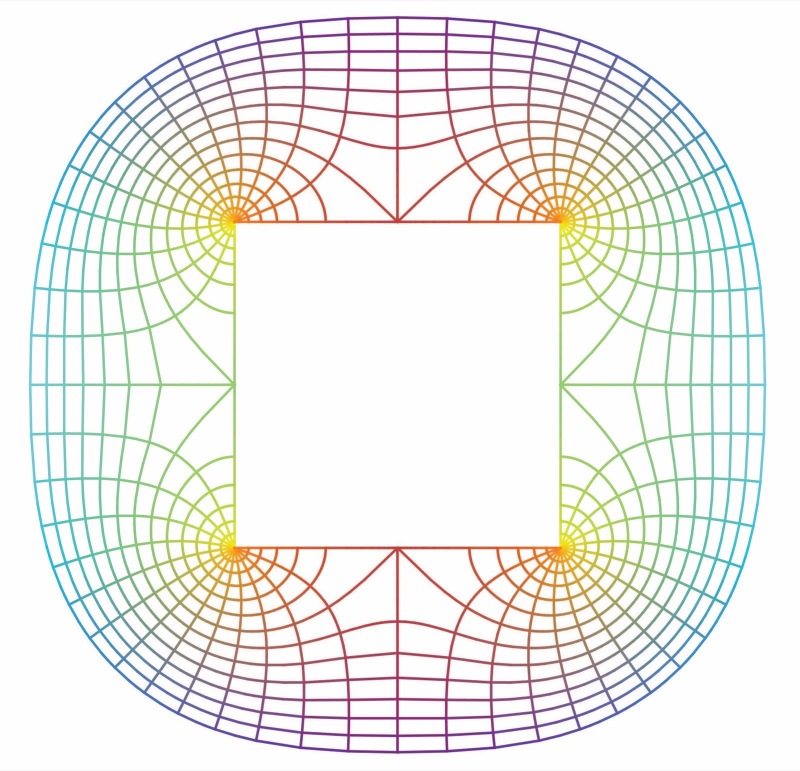When you take two non-parallel planes, they will intersect in a line. The singly periodic Scherk surfaces are the only minimal way to “desingularize” this, in the sense that they are the only known minimal surfaces asymptotic to these two planes. To show this is one of the many famous open problems about minimal surfaces.

The situation gets vastly more complicated with three planes. Nobody has yet succeeded in constructing a minimal surface that is asymptotic to the three coordinate planes. That is another open problem. A case where we do know something is that of three (or more) vertical planes. Martin Traizet has shown in 1994 that in case the planes are reasonably general one can wiggle them a little bit and desingularize them by gluing in singly periodic Scherk surfaces. The concrete and very symmetric example above was known before that.

The only requirement on the Scherk surfaces is that they have the same translational period and share a horizontal reflectional symmetry plane to ground them. But nothing prevents us from shifting one of the Scherk surfaces by a half-period, like up above. To make the image, I assumed another reflectional symmetry at a vertical plane (roughly parallel to the screen). This still left me with a 1-parameter family, whose existence is truly only guaranteed near the limit that looks like three Scherk surfaces (with one of them shifted). But nothing keeps us from looking at the other surfaces in this family.

Above I have turned it around so that one can appreciate the handles better. What emerges becomes clear when one pushed the parameter further:

A singly periodic Costa surface! There is a similar one constructed by Bastista and Martín where the Costa-necks are rotated by 45 degrees. It then loses its reflectional symmetries but gains straight lines.















